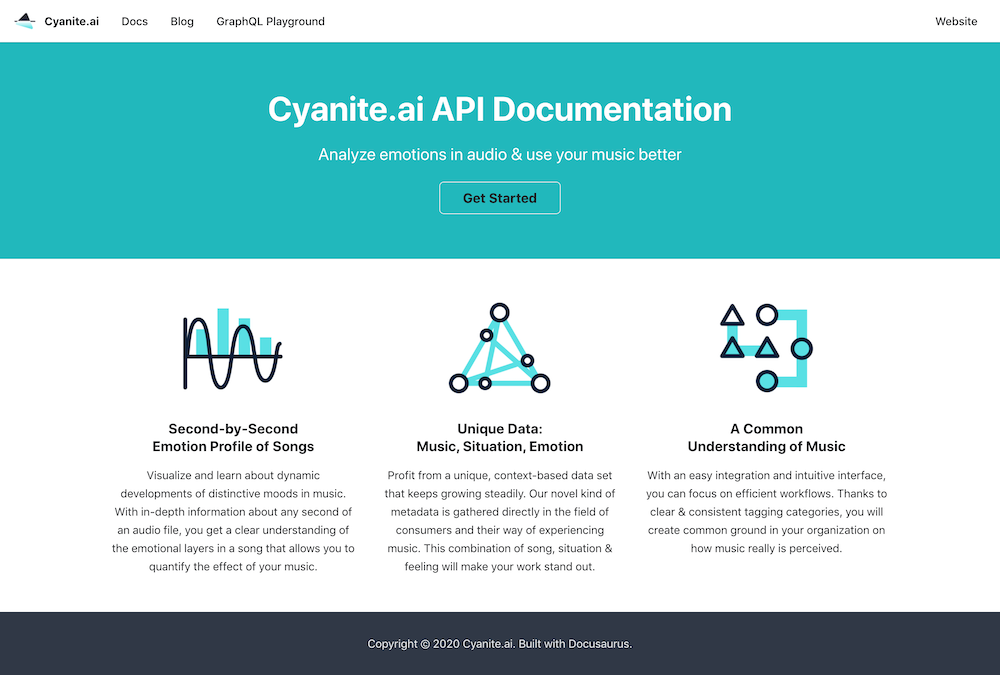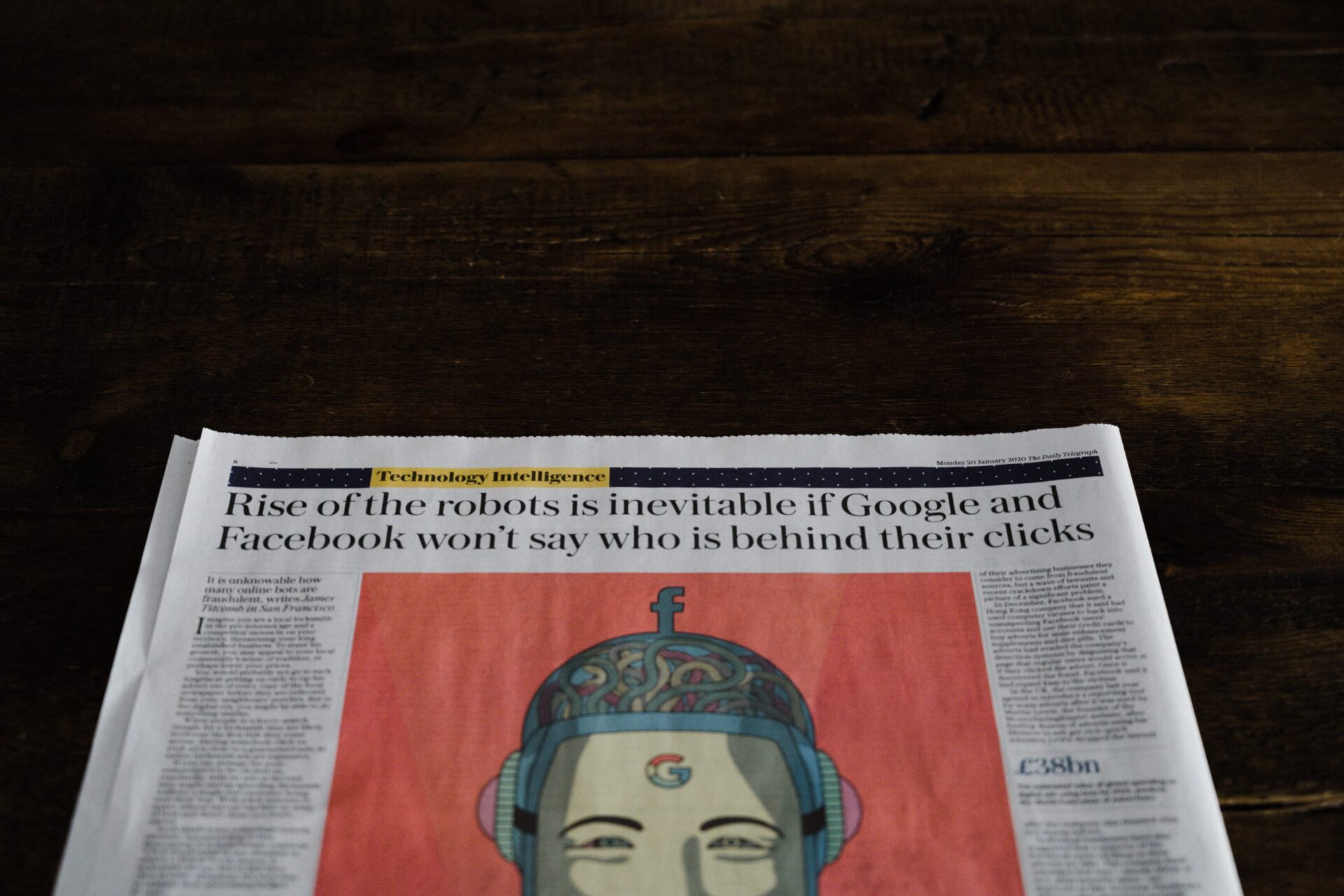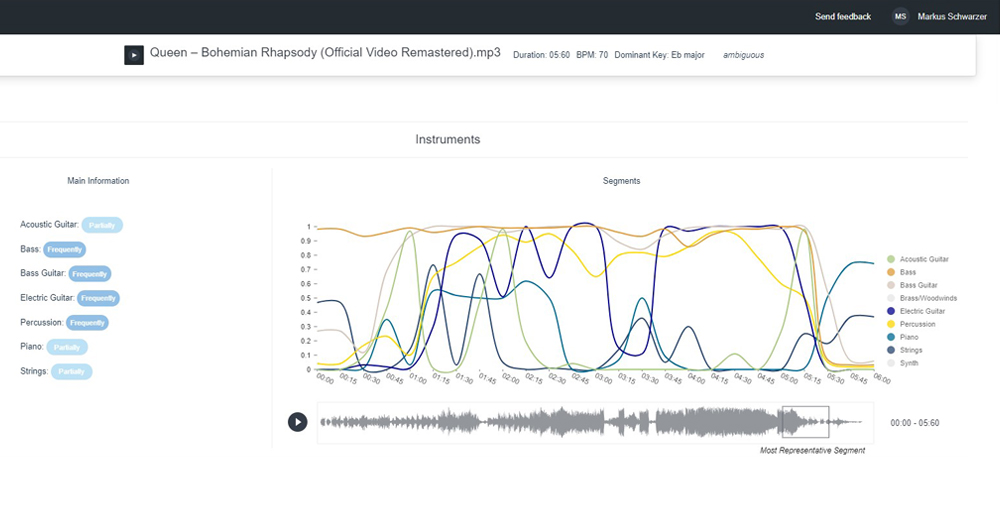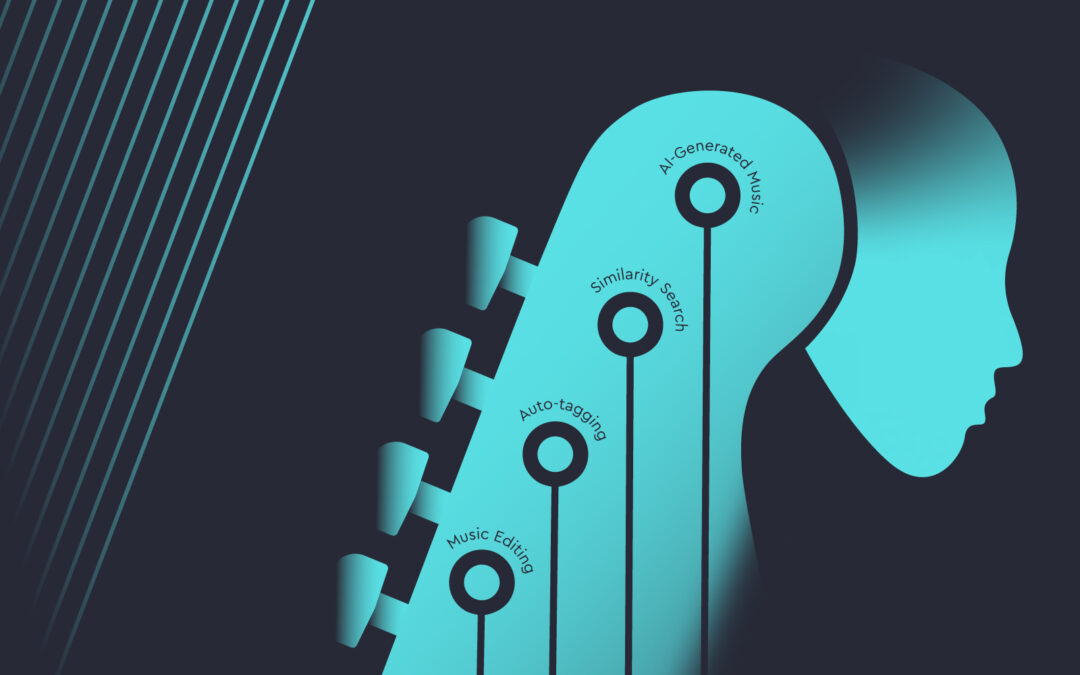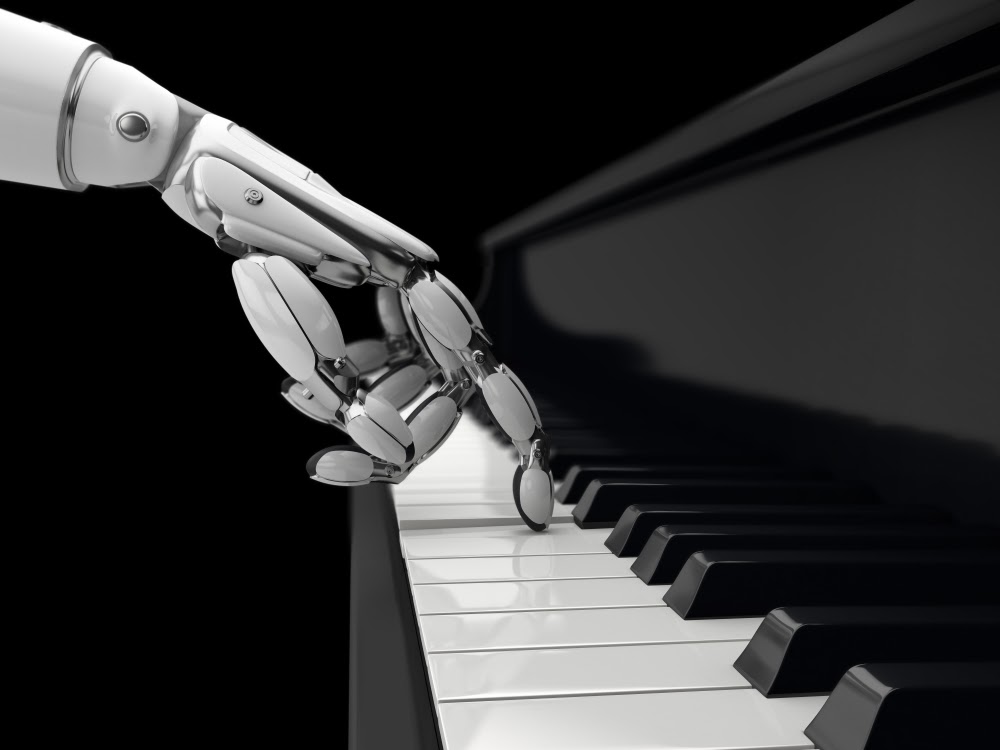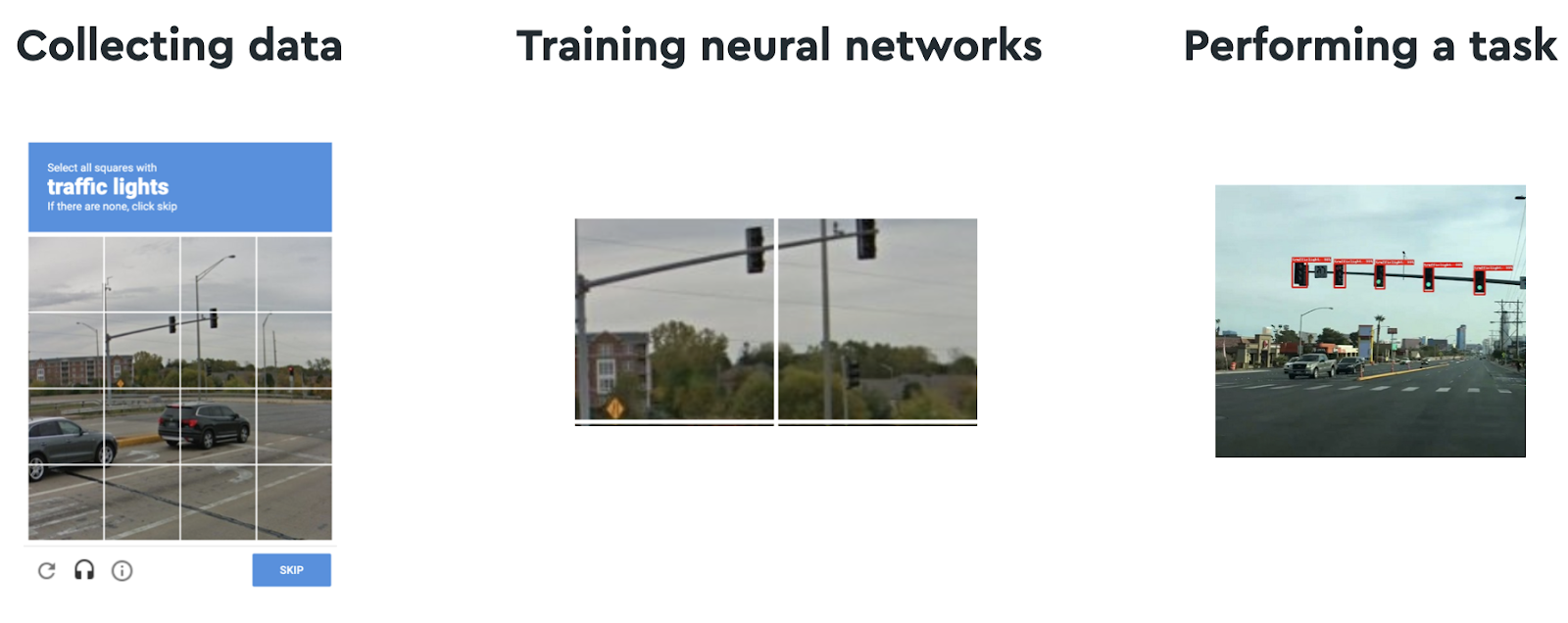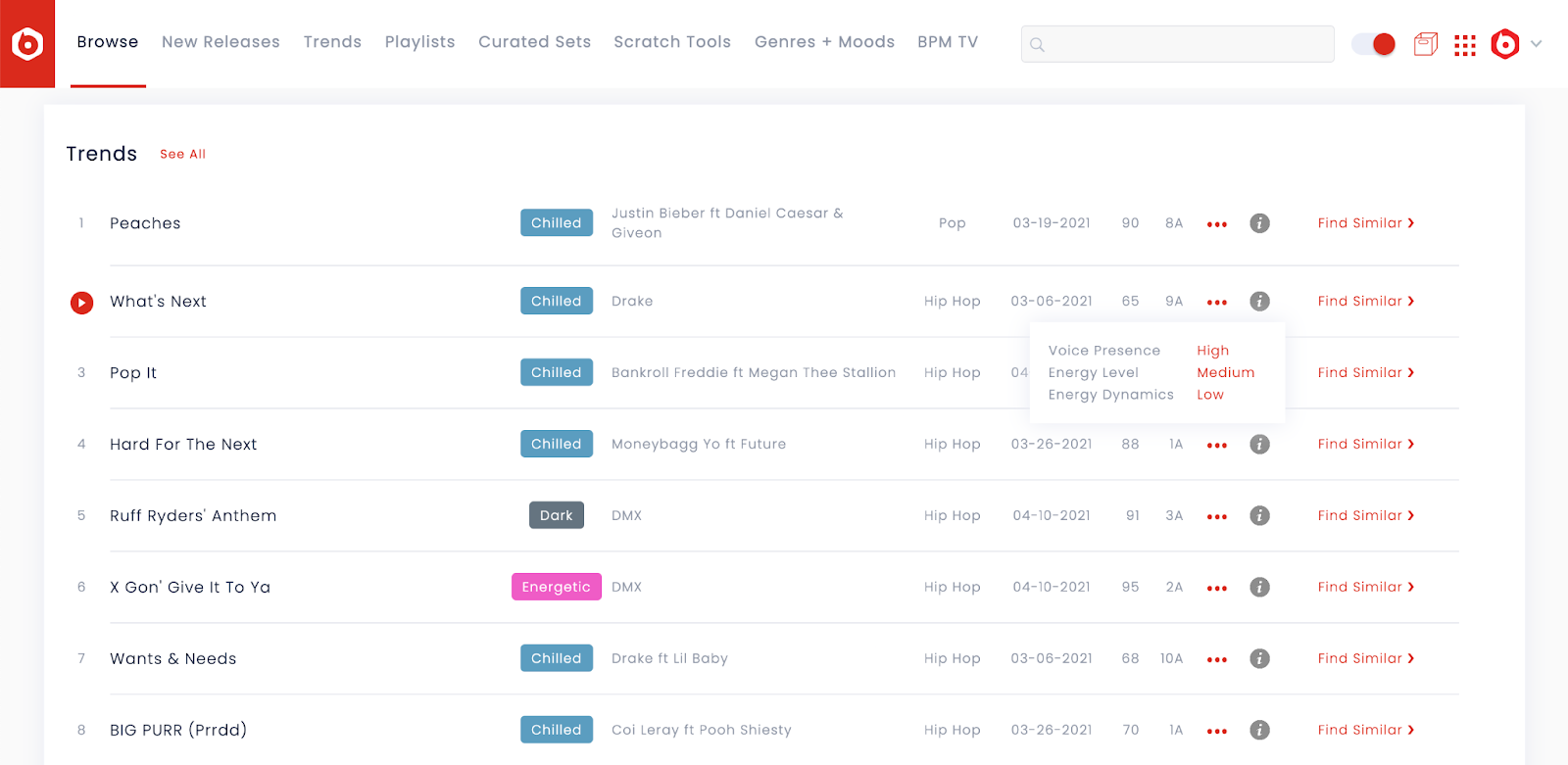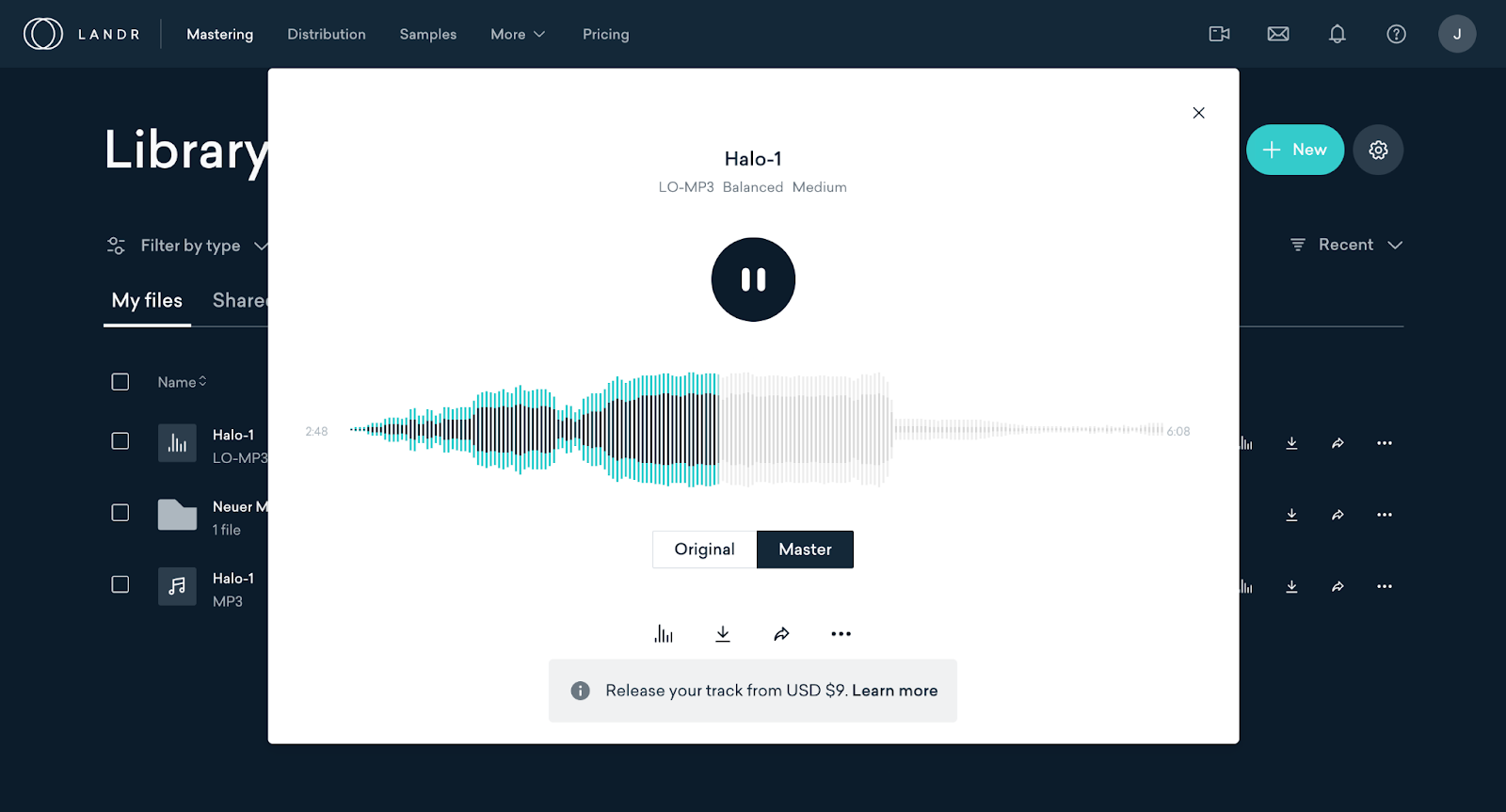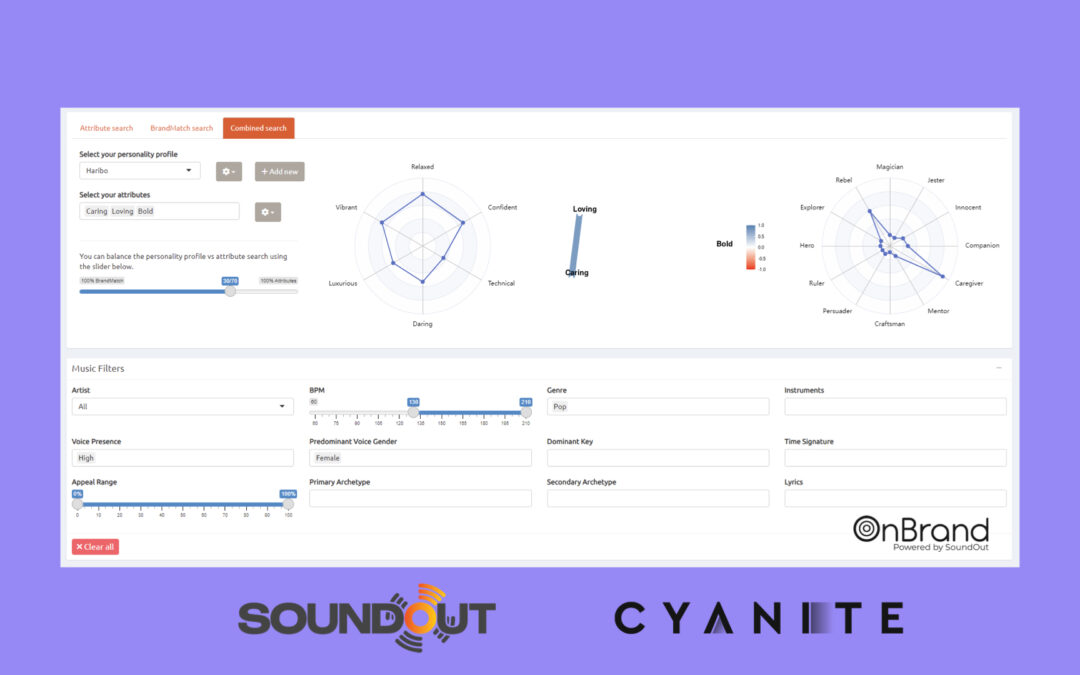
SoundOut launches OnBrand in cooperation with Cyanite
We are proud to share the latest press release by UK-based company SoundOut which is the world leader in sonic testing for audio branding.
In the announcement below, read about the new OnBrand platform developed by SoundOut and powered by the AI of Cyanite and how it empowers marketers to build certainty into every music choice for campaign.
Campaign music search for brands and agencies
October 26th, 2022, London: SoundOut launches OnBrand, an entirely new approach to music search that revolutionises the process of selecting music for marketing campaigns.
Hugely scalable AI-powered music search platform removes uncertainty from every brand campaign music decision
• OnBrand ensures music choices always match brand personality and campaign goals
• Increases certainty of ROI from music choices
• Launch partners include Unilever, Scholz & Friends (WPP) and Global Radio
• Combines leading SoundOut brand personality technologies with the scalability of German music AI company Cyanite to transform commercial music selection
SoundOut, the world leader in sonic testing, has launched a revolutionary AI-powered music search and testing SaaS platform named OnBrand. It enables marketers to build certainty into every music choice for campaigns. OnBrand is powered by AI algorithms that predict the granular emotional impact of music, trained on feedback from half a million people.
OnBrand enables marketers to search across any number of music catalogues to identify campaign music that is both on-brand and campaign appropriate, using a combination of over 200 brand attributes, plus self-defined brand personality and brand archetypes. In this way, OnBrand delivers greater certainty of immediate impact and sustained ROI from their campaigns, by reducing subjectivity and risk from music selection.
Global companies Unilever, Global, the Media & Entertainment Group, and Scholz & Friends – part of the WPP Network – are among the first users of the OnBrand platform.
Stephanie Bau, Global Assistant Brand Manager at Unilever, said: “With the growth of social media platforms like TikTok, sound has become the ultimate tool in a marketer’s arsenal. Choosing the right sound for our future campaigns has never been more important and this technology will enable brands to amplify their personality and have greater certainty of ROI from campaigns during these economically challenging times.“
Julian Krohn, Director Music & Audio, Scholz & Friends (WPP), said: “From an agency perspective, OnBrand is a uniquely powerful tool that will enable us to add significant value to our clients’ campaigns. Ensuring that music is both brand and campaign appropriate has never been easier – and OnBrand can only increase their return on marketing investment. We’re looking forward to working closely with the tool!“
Powered by a unique double-stacked AI layer of algorithms trained entirely on human derived data, OnBrand first automatically tags music with up to 500 separate attributes thanks to a partnership with Cyanite, the world-leading AI music tagging company. Then it uses a further AI layer to map these tags to SoundOut’s emotional DNA map of music, created with the input of over 500,000 consumer surveys and over 12 million datapoints.
Jo McCrostie, Creative Director at Global Radio, Europe’s largest commercial radio group, commented: “OnBrand represents a truly seismic revolution in how companies find brand appropriate music for commercial use. A previous lack of objectivity in music choices has restricted investment in audio marketing such as radio ads. I’ve seen for myself the positive reaction from brands to the new platform and it looks set to be transformational for the audio advertising industry.”
OnBrand can automatically rate any track against over 200 emotional attributes in a fraction of the time taken by people. It enables catalogues of millions of tracks to be emotionally indexed in under 24 hours with over 95% precision compared to human indexation.
David Courtier-Dutton, CEO of SoundOut, said: “Until now, choosing music for marketing has been a largely subjective exercise, with little in the way of objective metrics to confirm brand fit and emotional resonance. At a stroke, OnBrand introduces an objective, hugely scalable solution for brands worldwide. It enables data-informed music choices and provides robust cost/benefit analysis for any commercial music investment. OnBrand is not only totally brand-centric but it speaks brand language; enabling brands to enhance campaign performance whilst simultaneously strengthening their emotional bonds with consumers.”
Markus Schwarzer, CEO of Cyanite, added: “AI music tagging technology has advanced significantly over the past few years and has now been adopted by many of the world’s leading music and entertainment companies. The additional AI brand centric layer that OnBrand delivers truly democratises catalogue search for brands, enabling them to find the perfect track for any campaign using brand language rather than musical attributes.”
About SoundOut
SoundOut is the world leader in strategic sonic branding and audio marketing testing. It has achieved this lead position by combining three powerful capabilities.
-
Working with world leading music psychologists and over 500,000 consumers, it has mapped the explicit emotional DNA of sound and used this as the foundation for a suite of tools, such as BrandMatch, that can be used at various stages of sonic branding development to increase the certainty of a return on investment.
-
The development of a wholly owned consumer panel of over 3.5 million people, which enables brands to test their sonic assets at scale.
-
The testing and analysis of almost 200 in market sonic logos with over 400,000 consumers (The SoundOut Index) that reveals the key criteria that are essential to audio branding and audio marketing success.
SoundOut works with many of the most iconic brands in the world (such as TikTok, Amazon, Toyota, DHL, Ford, Unilever and GSK) as well as all the major record labels and many leading radio groups. SoundOut specialises in helping organisations trigger the right emotional response from their customers by matching brand personality and attributes to music. As a result, SoundOut provides the data and insight needed by clients to increase the certainty of achieving a strong ROI from their audio branding and marketing investments.
Clients use SoundOut’s unrivalled strategic sonic testing capabilities to identify the effectiveness potential of new sonic identities before they are launched and ensure that they resonate with the core brand personality.
OnBrand now scales these capabilities to all use of music in brand marketing, enabling brands to index huge music catalogues and search them based on the personality, attributes or archetype of their brand.






